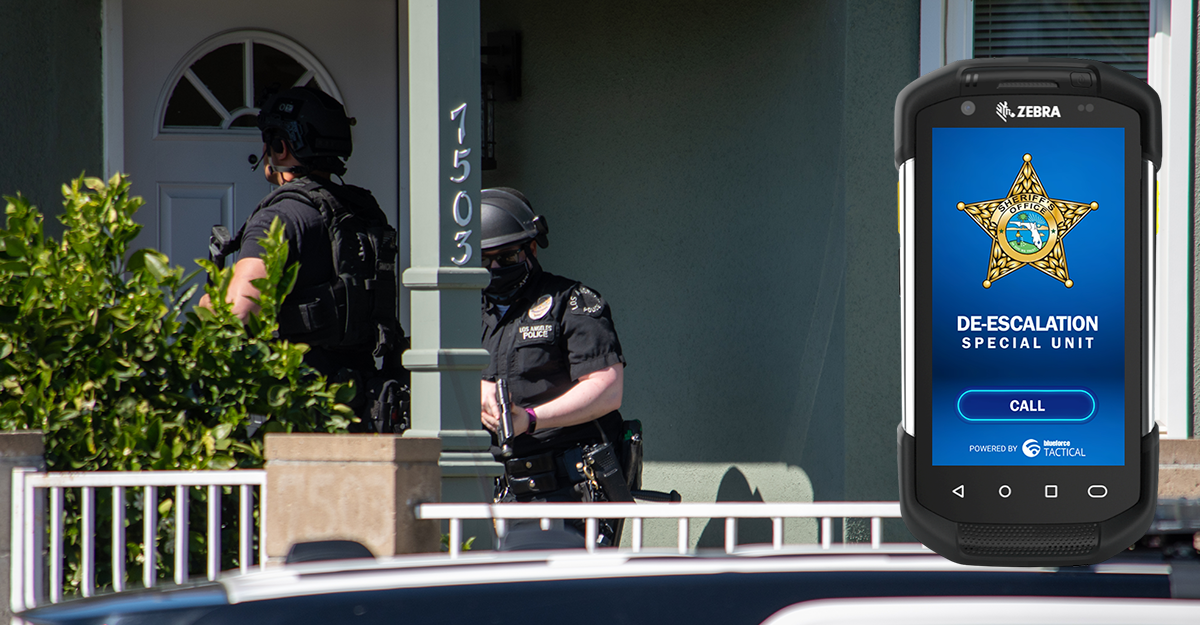
Crisis Negotiation and De-escalation powered by BlueforceTACTICAL
Crisis negotiation and de-escalation are law enforcement techniques used to communicate with people who are threatening violence (workplace violence, domestic violence, suicide, or terrorism) and can include barricaded subjects, stalkers, criminals attempting to escape after a botched robbery, and hostage-takers. While basic voice communications are of extreme value, understanding what is going on when the negotiator and subject are not on the phone enables better and more informed decisions.
A United States state police agency uses Blueforce as an alternative to the traditional “throw phone†by deploying MDM-enabled BlueforceTACTICAL on a rugged wireless phone which can be “thrown†into a hostile environment. Law enforcement can leverage the inherent voice capability of the device while leveraging Blueforce for enhanced sensing and ground truth intelligence when voice communications are paused.
While Blueforce supports more than 300 sensors (including mobile device internal sensors) from more than 100 manufacturers, here are several Blueforce Plugins in use today as part of crisis resolution and de-escalation:
- Audio Plugin: The Blueforce BTAC Audio Plugin enables the opening of the device microphone, unbeknownst to the perpetrator, to enable real-time monitoring of the situation. Where situations are quickly escalating, this capability enables rapid awareness that the situation is becoming more volatile, but also sheds light on numbers of people, languages, and if there are animals in the structure.
- Camera plugin: The Blueforce BTAC camera plugin allows the deployed team to request photos from the deployed Blueforce throw phone device to provide additional situational awareness as to “how many people†are involved and other imagery assisted intelligence.
- Proximity: The Blueforce BTAC BLE Listener enables responders to understand proximity between responders and those in the hostage situation using Bluetooth low energy and “beacon†proximity algorithms.
All of the above is available to the negotiator but can also be securely shared with the entire tactical team and stored full chain of custody.  For more information, download the data sheet, call us at +1 866-960-0204, or send an email to info@blueforcedev.com.



